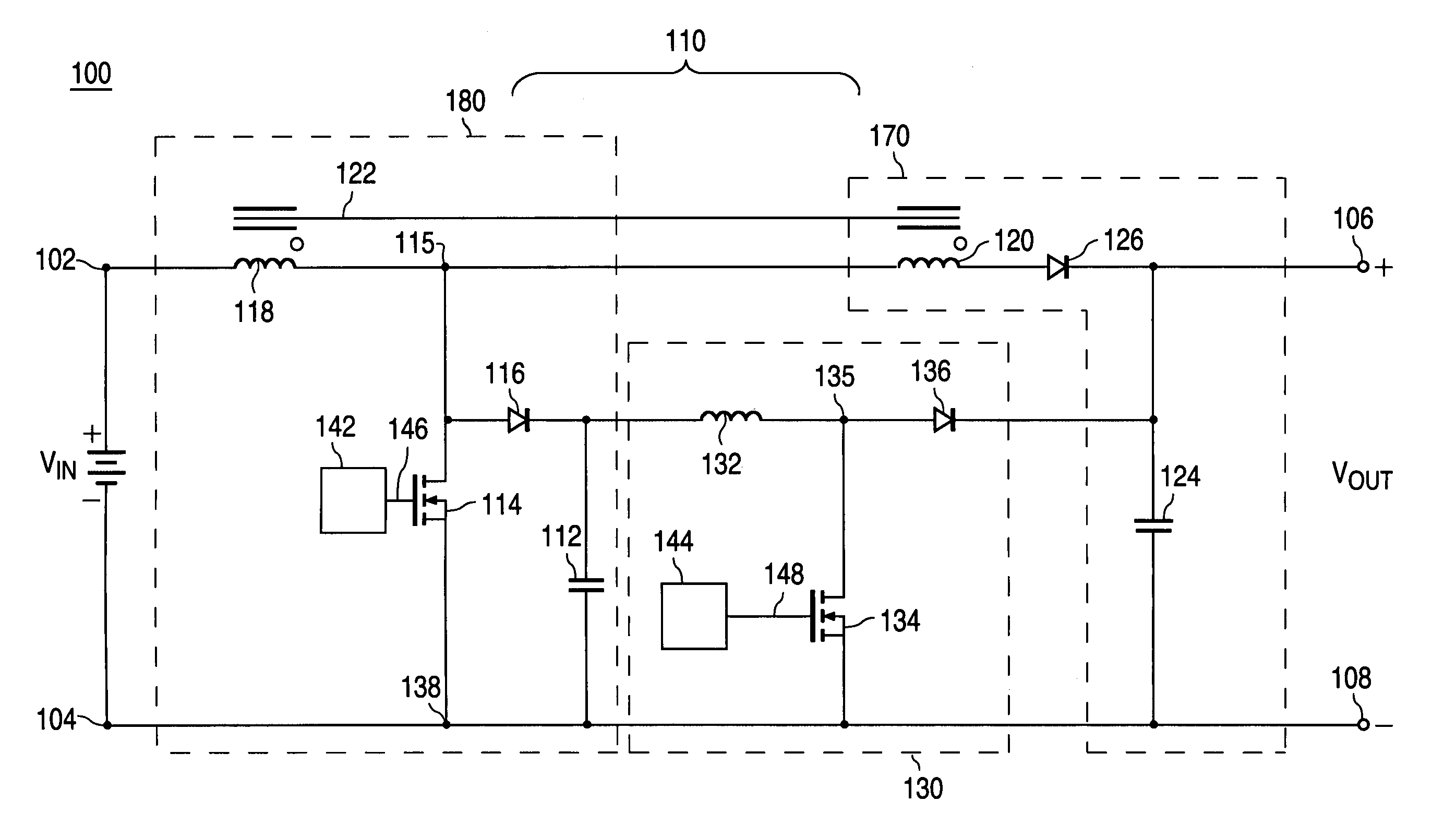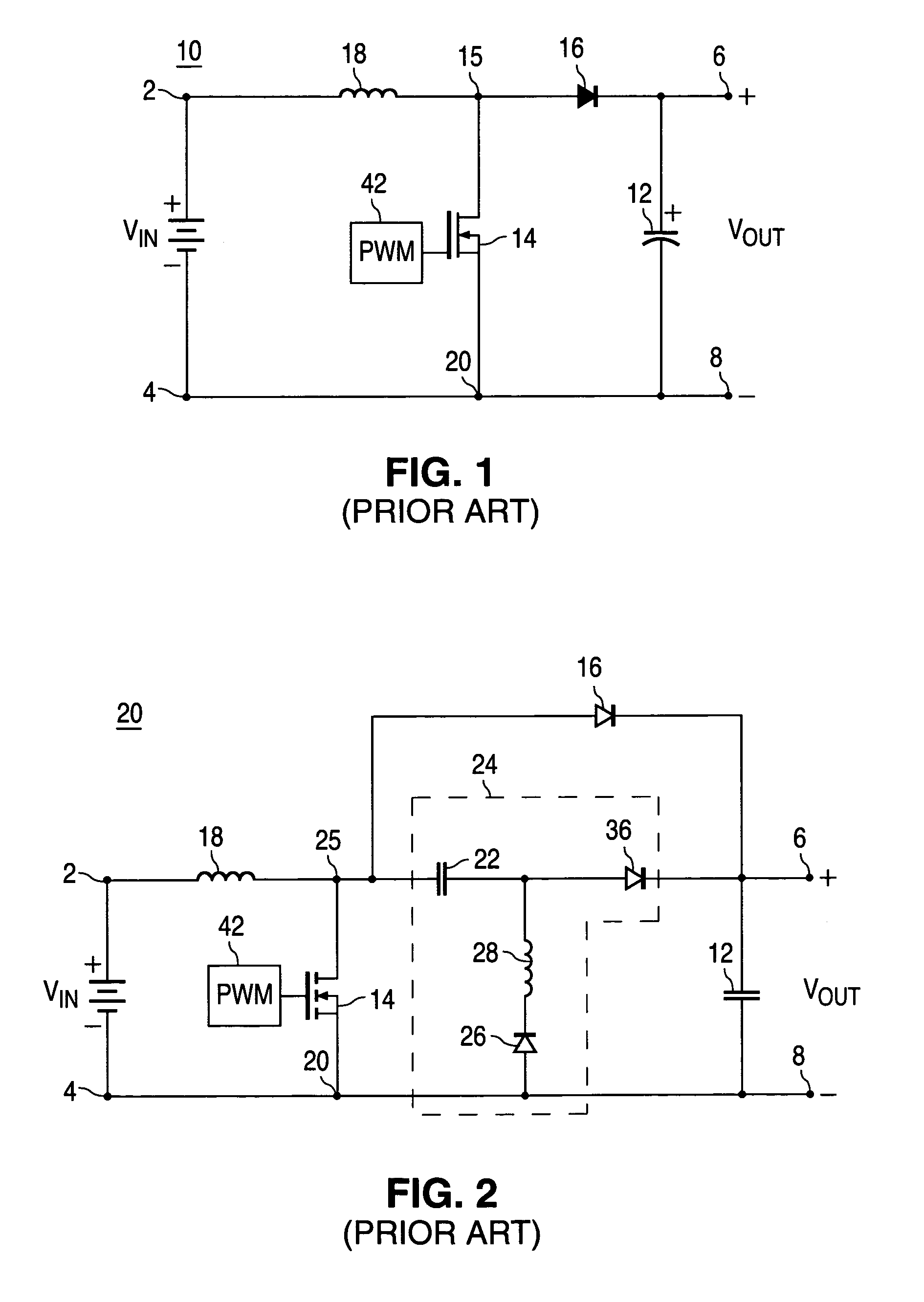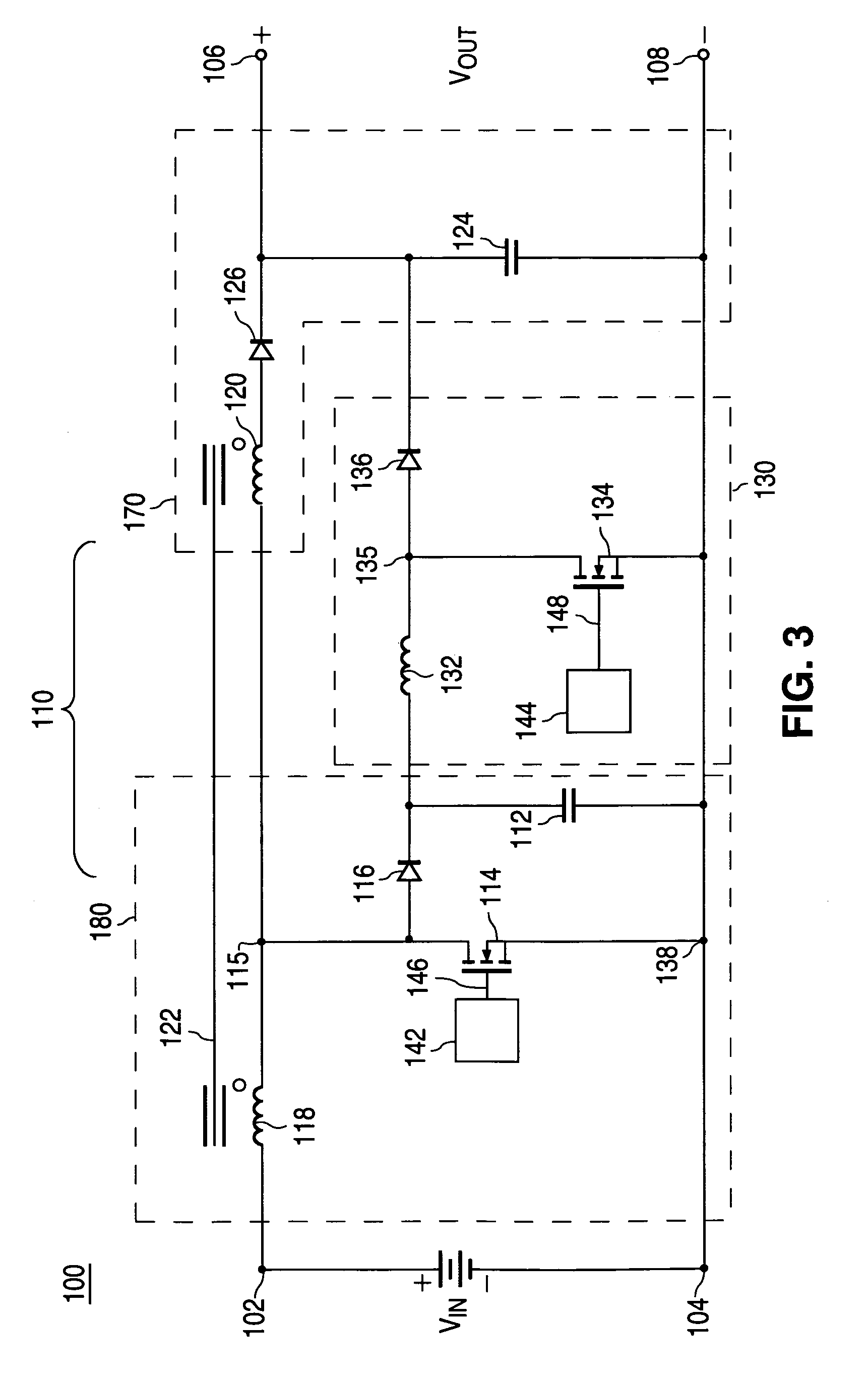Two stage boost converter topology
a converter and topology technology, applied in the field of dcdc converters, can solve the problems increased size and cost of high current and high voltage rated mosfets, and higher conduction losses of converters requiring rdson rated mosfets, so as to reduce the conduction and turn on losses of switches, reduce the cost of conversion, and reduce the effect of high step up ratio applications
- Summary
- Abstract
- Description
- Claims
- Application Information
AI Technical Summary
Benefits of technology
Problems solved by technology
Method used
Image
Examples
Embodiment Construction
[0025]FIG. 3 is a schematic diagram of a preferred embodiment of the power converter 100 according to present invention. In a preferred embodiment, the power converter 100 has a boost converter topology including first 102 and second 104 input terminals where an input voltage is coupled and two output terminals 106, 108 where the output DC voltage is provided. Power converter 100 includes a two stage boost circuit 110 and a second boost converter 130. The two stage boost circuit 10 has a first stage circuit 180 and a second stage circuit 170. The two stage boost circuit 110 includes a magnetically coupled inductor 122 having a first winding 118 having one end connected to the first input terminal 102 and a second winding 120 connected to the other end of the first winding 118.
[0026]The first winding 118 of magnetically coupled inductor 122 is part of the first stage circuit 180. The first stage circuit 180 also includes a first switch 114 having a control input. The switch 114 is ty...
PUM
 Login to View More
Login to View More Abstract
Description
Claims
Application Information
 Login to View More
Login to View More - R&D
- Intellectual Property
- Life Sciences
- Materials
- Tech Scout
- Unparalleled Data Quality
- Higher Quality Content
- 60% Fewer Hallucinations
Browse by: Latest US Patents, China's latest patents, Technical Efficacy Thesaurus, Application Domain, Technology Topic, Popular Technical Reports.
© 2025 PatSnap. All rights reserved.Legal|Privacy policy|Modern Slavery Act Transparency Statement|Sitemap|About US| Contact US: help@patsnap.com



